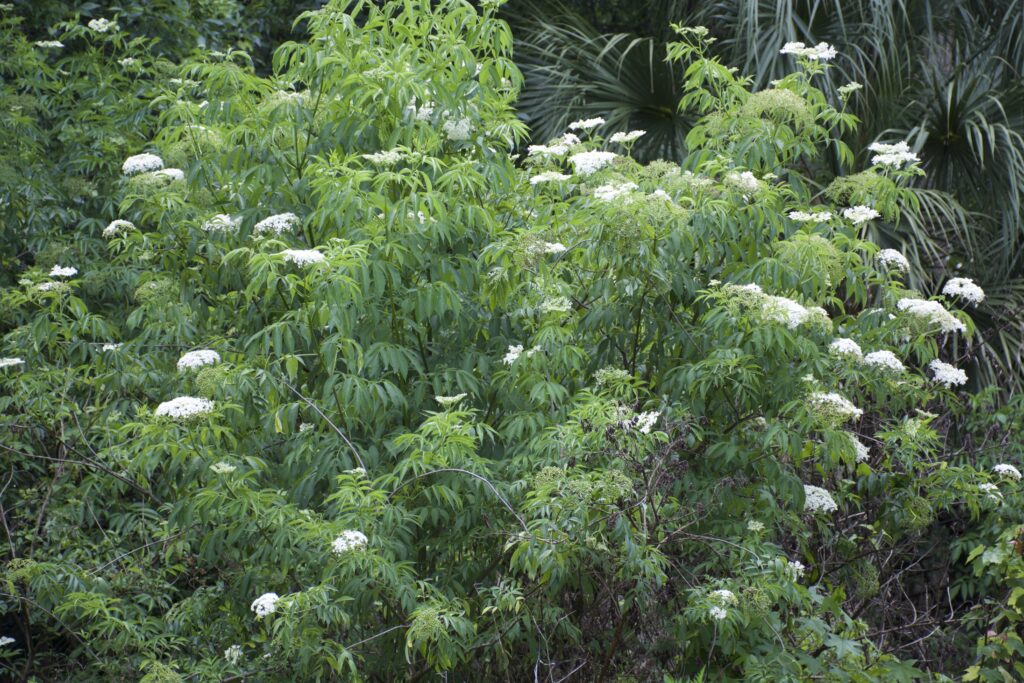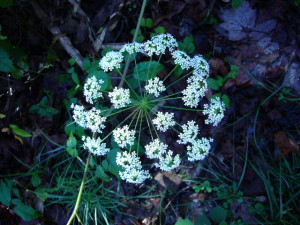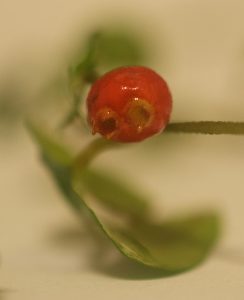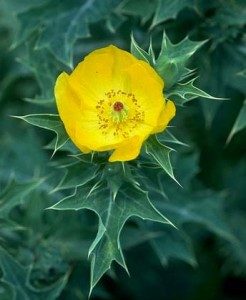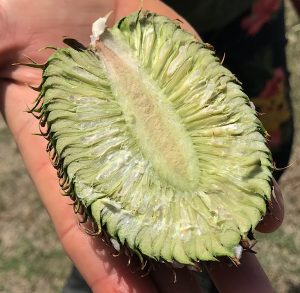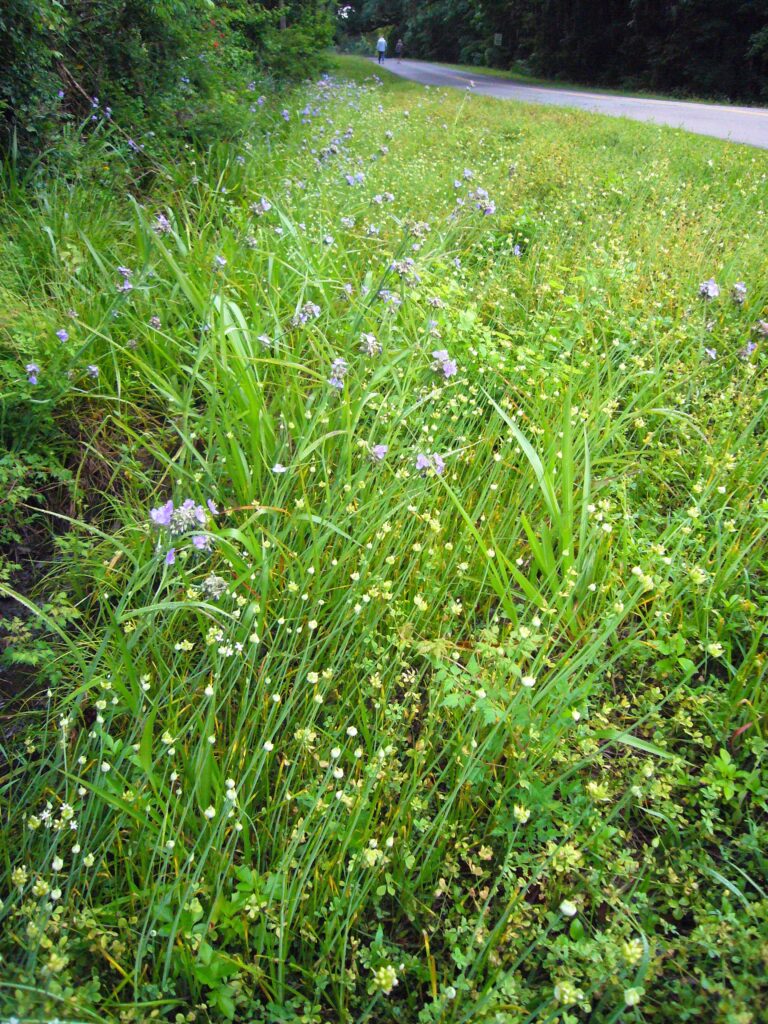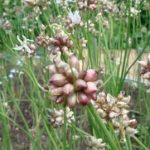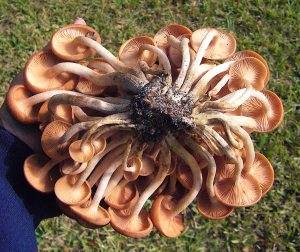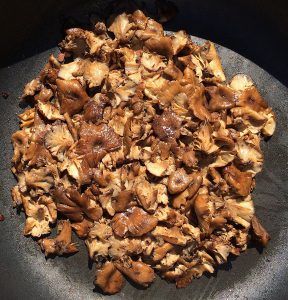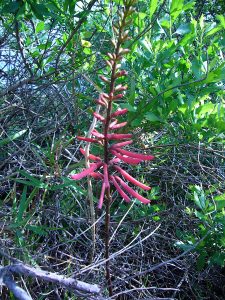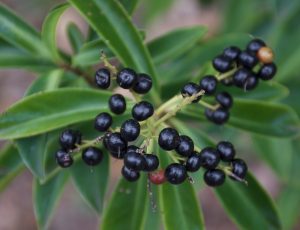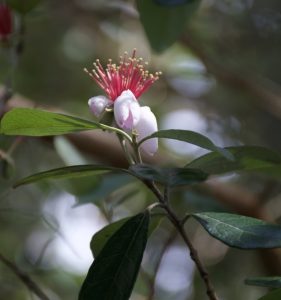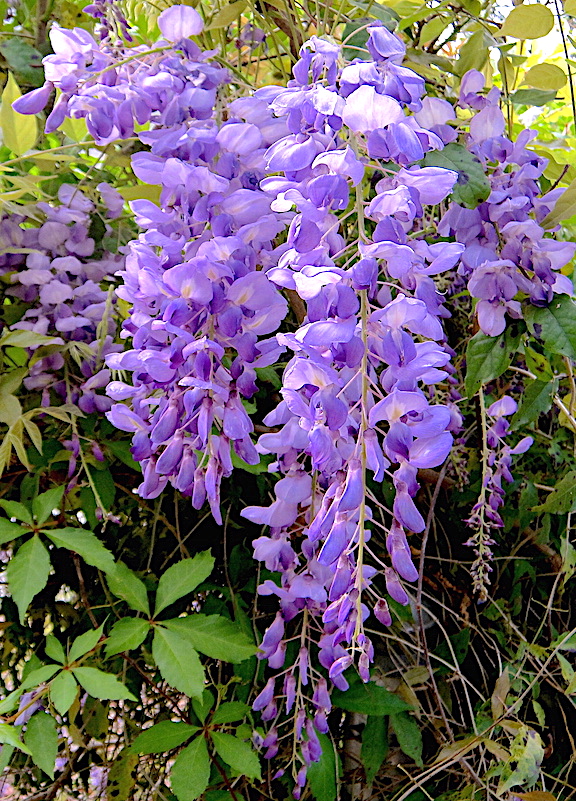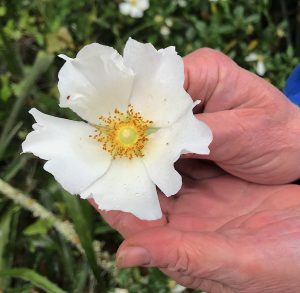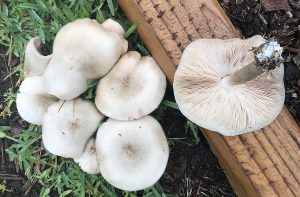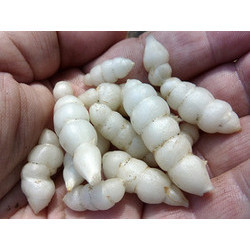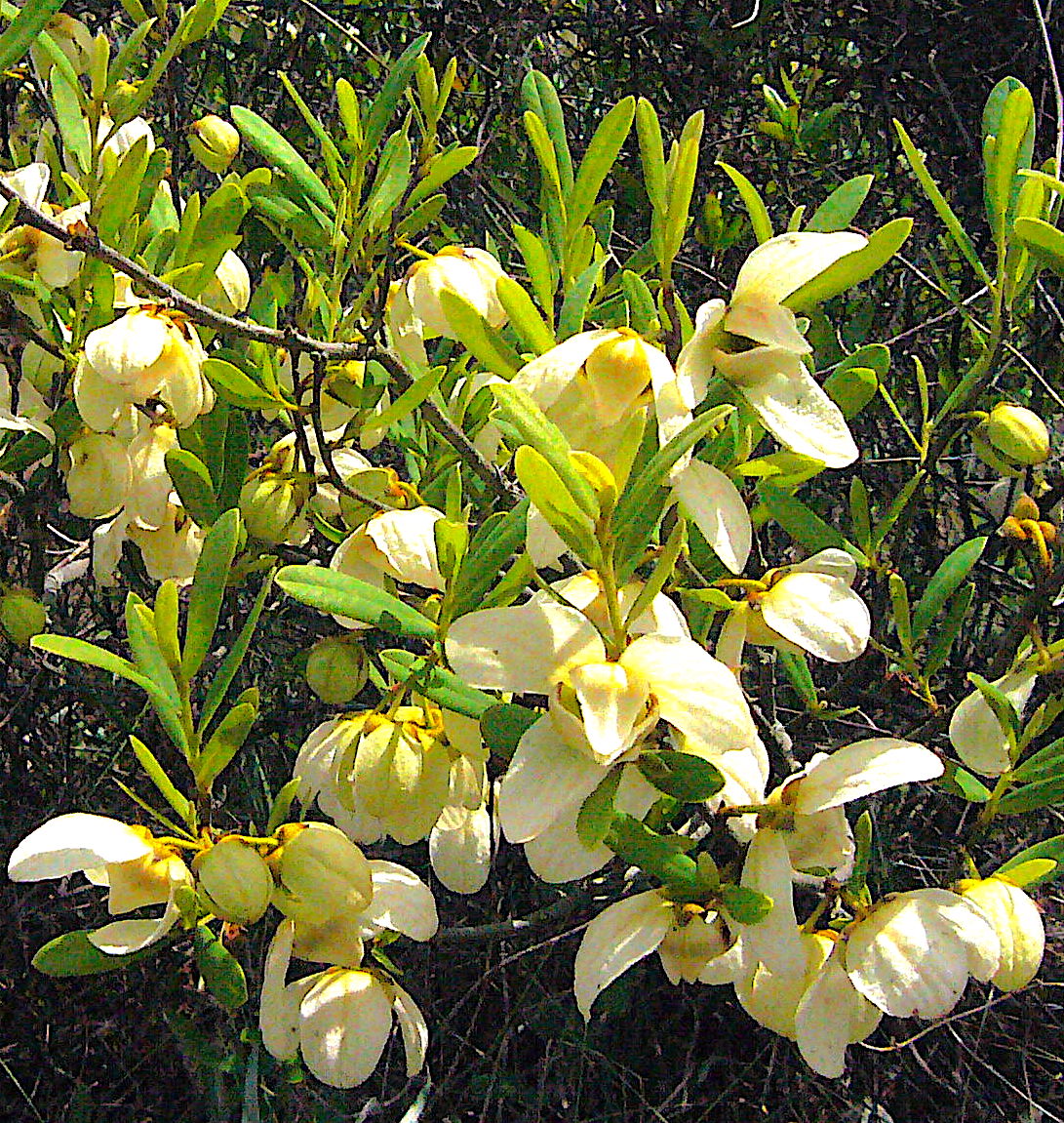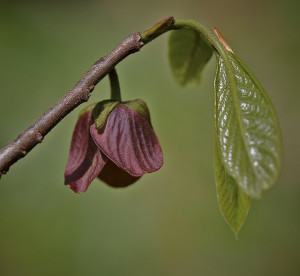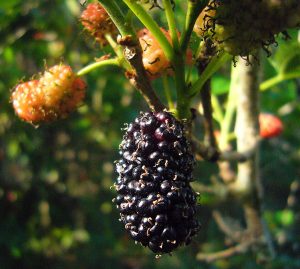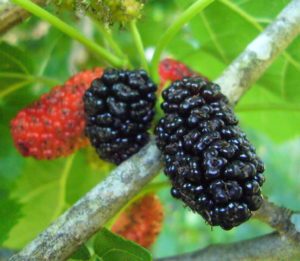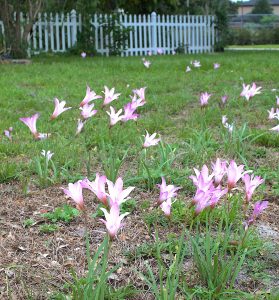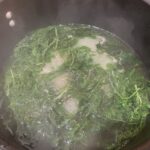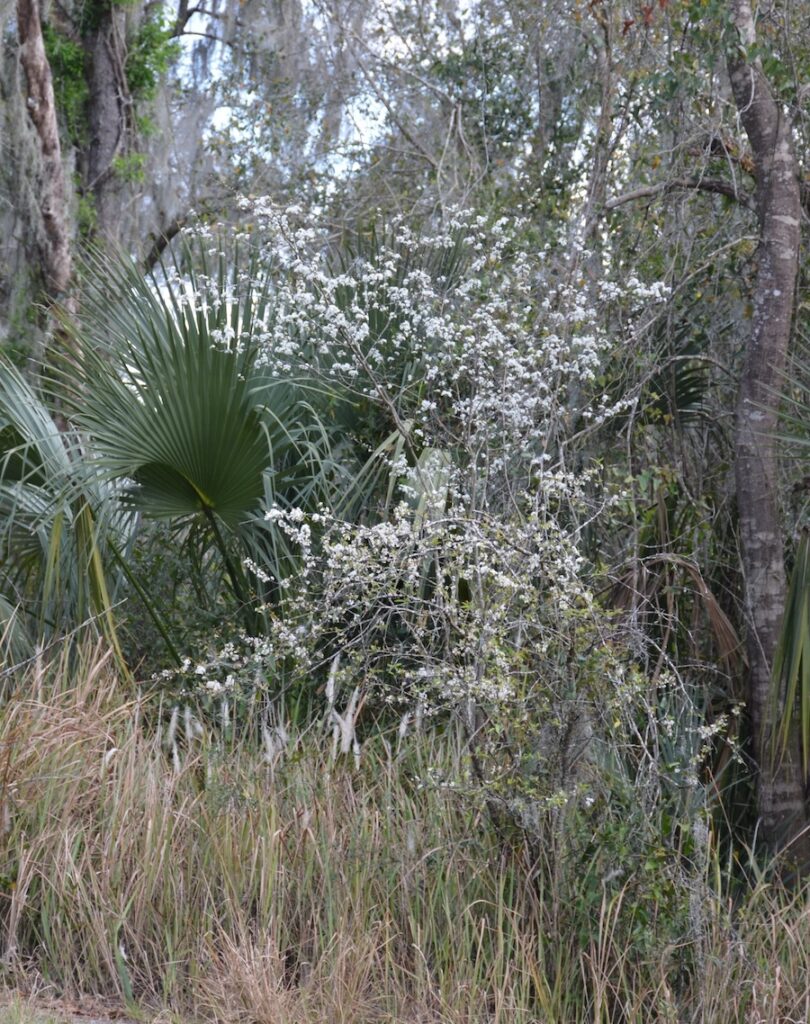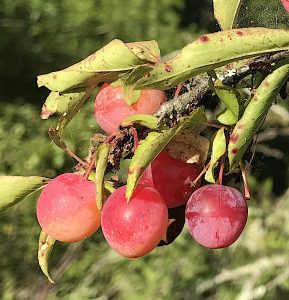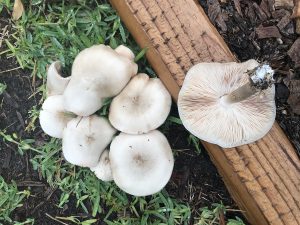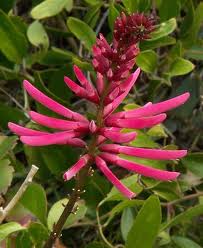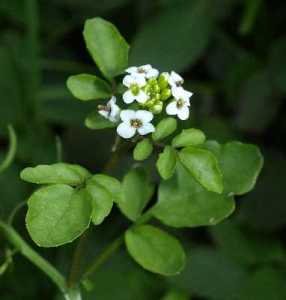
Pineapple Guava blossoms are always attractive. Photo by Green Deane
Perhaps no ornamental has been championed by nurseries as much as the Pineapple Guava, aka Feijoa, Acca sellowiana, Feijoa sellowiana. However the perfect shrub for many places never really caught on. There could be several reasons. It probably didn’t help that the Strawberry Guava is a severe invasive species in some locations, such as Hawaii. The shrub also does not get showy. You have to hunt for the extroverted blossoms. While the entire blossom is edible most people only eat the petals. Five or six months from now they become a dark green fruit that stays green as it ripen. The fruit just gets softer. The shrub is easy to identify when in blossom as it is now. I have seen one in parks in Jacksonville, Ocala, and Winter Park. To read more about both guavas, go here.

Toothache tree berries. Photo by Green Deane
The Toothache tree is coming into season. Also called Hercule’s Club, the thorns, bark and leaves have been used at least for centuries to numb aching teeth. It will also make you drool, a small inconvenience to silence an aching tooth. You can read about it here. Many Americans have actually eaten part of a relative of the Toothache Tree, Zanthoxylum simulans (and Z. bungeanum.) AKA Szechuan Pepper. That spice is made from the seeds hulls of the species. We can use the seed hulls of our tree as well. The tree is covered with thorns so approach with care. We can eat one or two of the berries, but they will numb your mouth and are exceptionally strong in flavor. (Another thorny tree seen locally is Aralia spinosa, which is not related but is sometimes also called Hercules Club.) Edible Aralia parts are young spring shoots, raw or blanched/boiled. I think cooked is best, and safest. As it is in the order of araliaceae you detect a might detect a hint of parsley and or cilantro in the flavor.
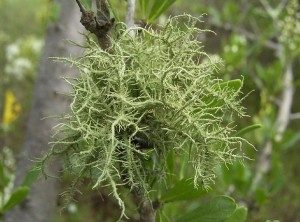
Usnea, note the round stems. Photo by Green Deane
Almost all lichen are edible once leached of their bitter acids. The flavor ranges from bad to almost palatable. But, they are high in calories, have saved many a stranded hunter or downed pilot, and are found nearly worldwide. Lichens have been used in dyes, deodorants, laxatives, expectorants, tonics, and as one monograph put it, “healing pastes.” They are also an indicator of clean air. We’re more interested in Usnea than Ramalina for its medicinal qualities. Usnea is basically an antiseptic. While Ramalina and Usnea resemble each other there are three main differences: The Ramalina’s stems are flatish, Usnea is round; Ramalina does not appear to be hairy, Usnea looks hairy; and only Usnea — among all the many species of lichen, has an elastic, white inner core. If you want to read more about lichen go here, for a video here.

Minor’s lettuce, high in vitamin C.
Across the country in parts of California Miner’ Lettuce is making its spring run and will be blooming through May. Dry, summer heat ends its season. This delectable comes from a family of other edibles — Claytonia — and was once lumped in with the purslane group. It doesn’t naturally get anywhere near Florida. The most distinctive feature of the Miner’s Lettuce is the leaf structure. Shaped like a saucer or cup the flower stalk pushes through the middle of the upper leaf. Difficult to mis-identify. It’s a resident of western North America with token populations in Georgia and northern New Hampshire. I have been unable to find any reference to it growing in Georgia in modern times. Miner’s Lettuce — which is high in vitamin C — is particularly common along the Pacific coast in shady spots and canyons. Its name comes from 1849 Gold Rush miners who ate it to ward off scurvy.
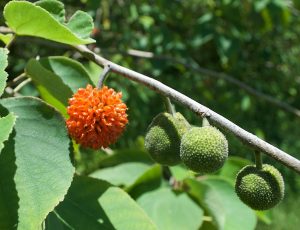
Paper Mulberries are related to bread fruit. Photo by Green Deane
Also nearing fruit is the Paper Mulberry. For many years it was in the same genus as the other mulberries but was farmed out on it’s own. Oddly it is closely related to the Jackfruit, a resemblance that can be seen in the unripe fruit center that looks a small Jackfruit about the size as a large marble. As the name implies the bark of the species was used for thousands of years to make paper and also clothes. It, too, has young leaves that are edible cooked but, like Kudzu, they have a fuzzy texture issue that cooking does not moderate. The core of the mulberry fruit grows a covering of hair that eventually makes the fruit look like a small orange pompom. That’s the part that is edible. Another sidelight of the Paper Mulberry is that its native habitat is a temperate forest. Apparently if it doesn’t get enough chill hours it doesn’t fruit, particularly here in sub-temperate Florida. Paper Mulberry fruit irregularly in the greater Orlando area. It does fruit in Ocala and further north. I have had reports of it fruiting south of mid-state but I have not seen good evidence of said. You can watch a video about it here or read about the Paper Mulberry here.

In European mountains look for a spring, there often is a village nearby. Photo of Karea, Greece by Deane Jordan
Where do you forage? It’s a question I am asked often and I will provide link to a newsletter three years ago where I explore the topic. The question I was asked this week was more in relation to cities. I am not opposed to foraging downtown and actually hold an annual foraging class in downtown Winter Park. It only requires a little more attention to detail. The only significant problem with “reclaimed” water is that it is higher in nitrates. The plants grow better. As more plants — other than perhaps the Palmer Amaranth — don’t sequester nitrates plants watered with reclaimed water don’t bother me. Plants in planters don’t bother me if they are maintain. Removing weeds can remove unwanted chemicals. Watered beds above the drainage line of the street or parking lot are usually okay. It is lower areas where run off collects that I do avoid. Here is the link.
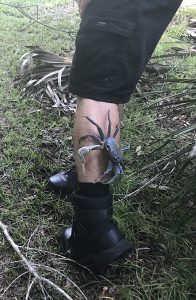
To a startled Land Blue Crab a leg is as good as a tree. Found at Princess Place Preserve. Photo by Green Deane
Foraging classes: We might have to dodge rain in Saturday’s class:
Saturday, May 18th, the Princess Place Preserve, 2500 Princess Place Rd, Palm Coast, FL 32137, 9 a.m. to noon. Meet at the parking lot by the cabin.
Sunday, May 19th, Red Bug Slough 5200 S. Beneva Road, Sarasota, Fl.. 9 a.m. to noon. Meet at the parking lot.
For more information on these classes, to prepay or sign up go here. The cost is $30 per adult (the class is usually three hours long and examines five-dozen or so species.) If cost is a hardship email me at: Green Deane @ gmail.com.

Green Deane Forum
Tired of Facebook and want to identify a plant? The Green Dean Forum is up and running again. Have you come to dislike Facebook, then join us on the forum. Perhaps you’re looking for a foraging reference? You might have a UFO, an Unidentified Flowering Object, you want identified. On the Green Deane Forum we — including Green Deane and others from around the world — chat about foraging all year. And it’s not just about warm-weather plants or just North American flora. Many nations share common weeds so there’s a lot to talk. There’s also more than weeds. The reference section has information for foraging around the world. There are also articles on food preservation, and forgotten skills from making bows to fermenting food.

You get the USB, not the key.
172-video USB would be a good end of spring present and is now $99. My nine-DVD set of 135 videos has been phased out. The USB videos are the same videos I have on You Tube. Some people like to have their own copy. Most of the 172 USB videos have to be copied to your computer to play. If you want to order the USB go to the DVD/USB order button on the top right of this page. That will take you to an order form.
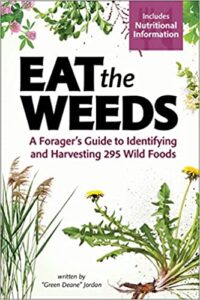
Now in its second printing.
274 plants, 367 pages, index, nutrition charts and color photos. It’s available in many locations including Amazon. Most of the entries include a nutritional profile. It can also be ordered through AdventureKeen Publishing.
This is weekly newsletter #601. If you want to subscribe to this free newsletter you can find the sign-up form in the menu at the top of the page.
To donate to the Green Deane Newsletter click here.



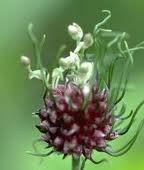 HARVESTING NOW:
HARVESTING NOW: 

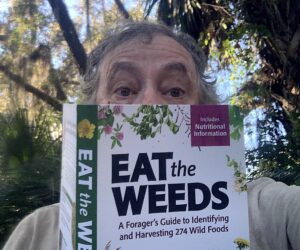
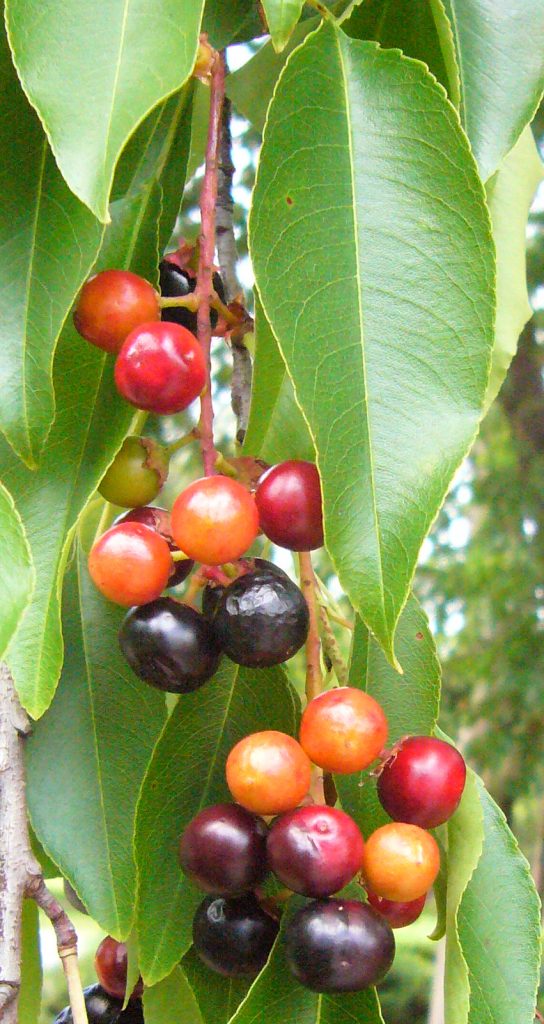
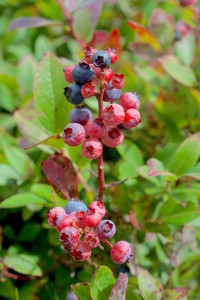
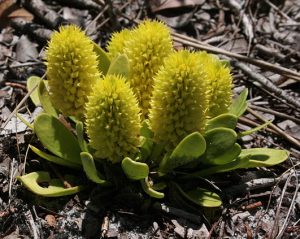
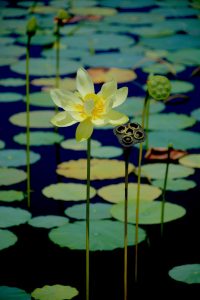
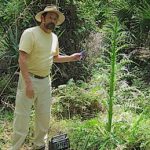
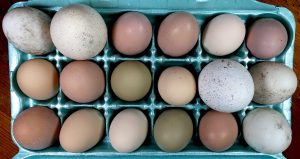
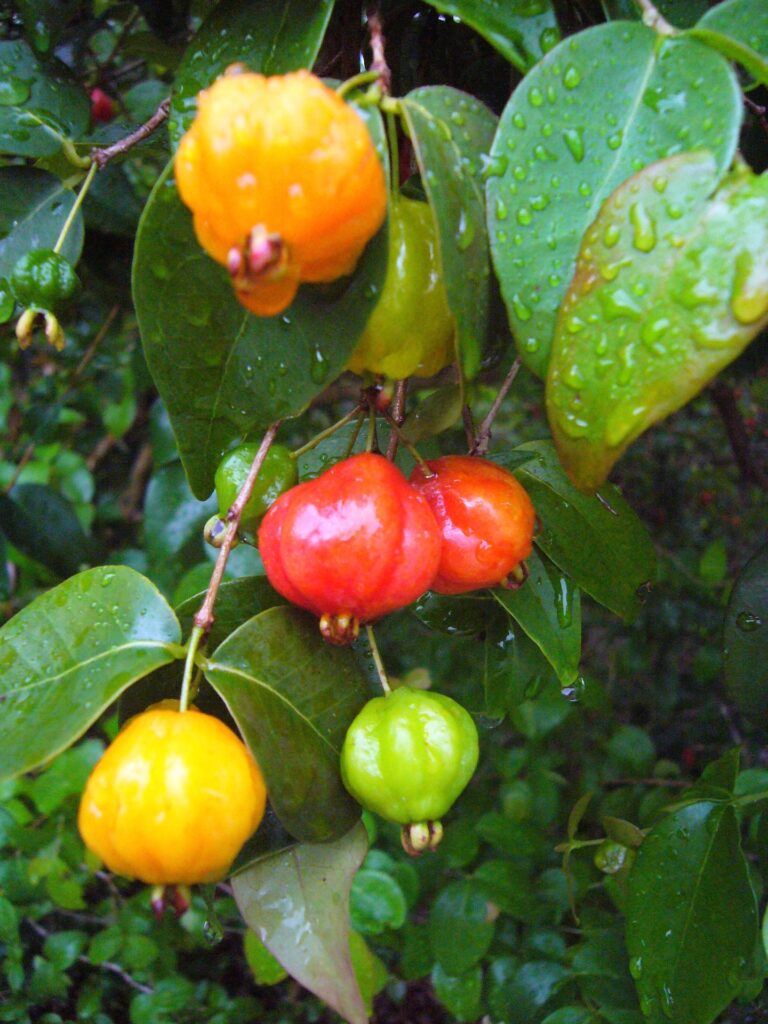
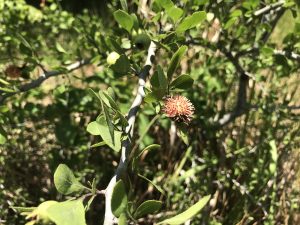
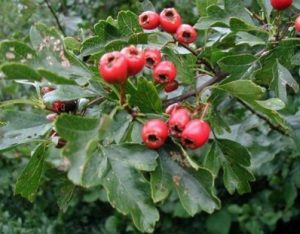
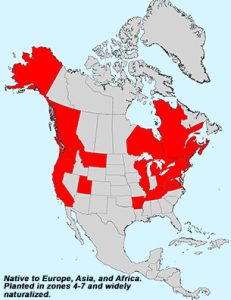
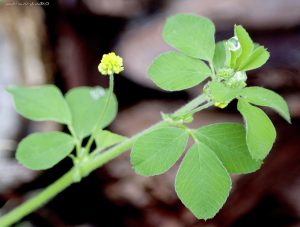
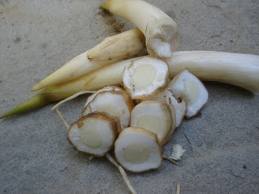 If you were starving and came upon a patch of
If you were starving and came upon a patch of
